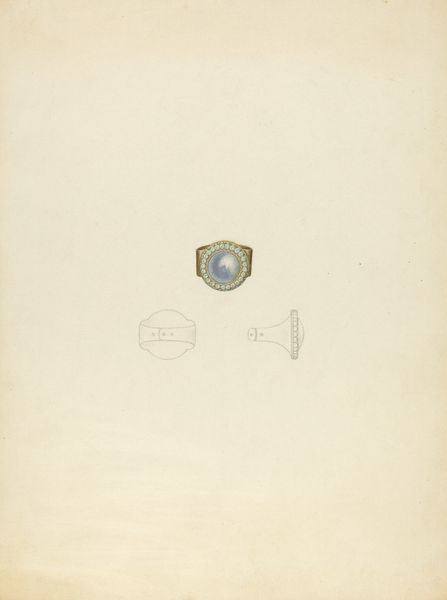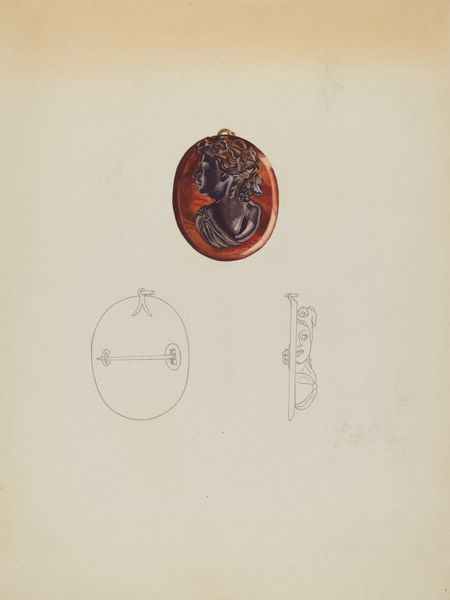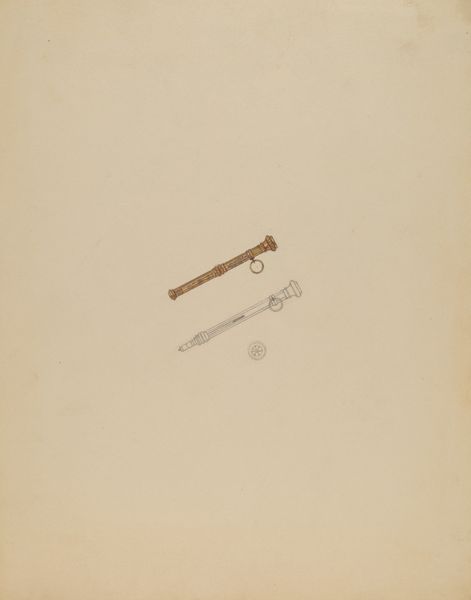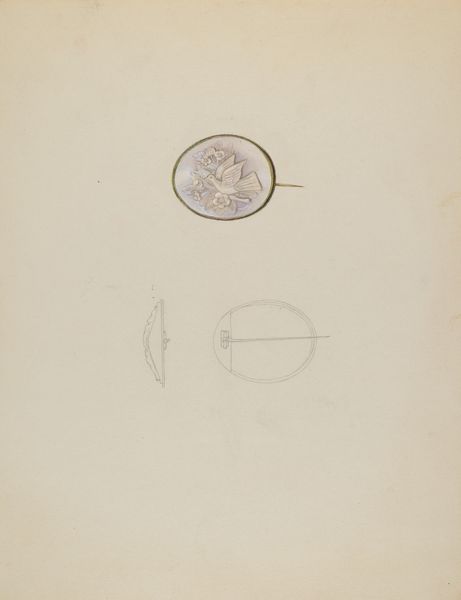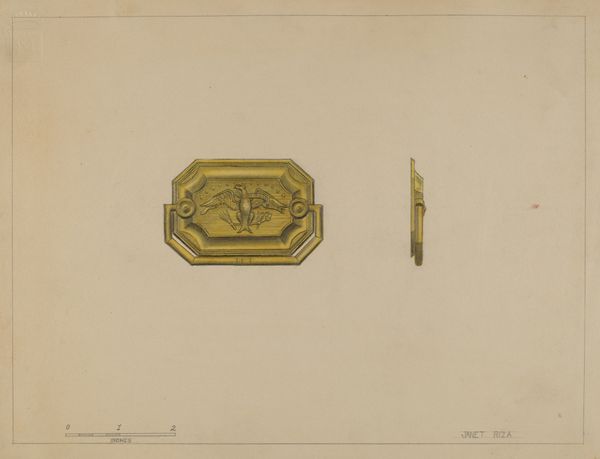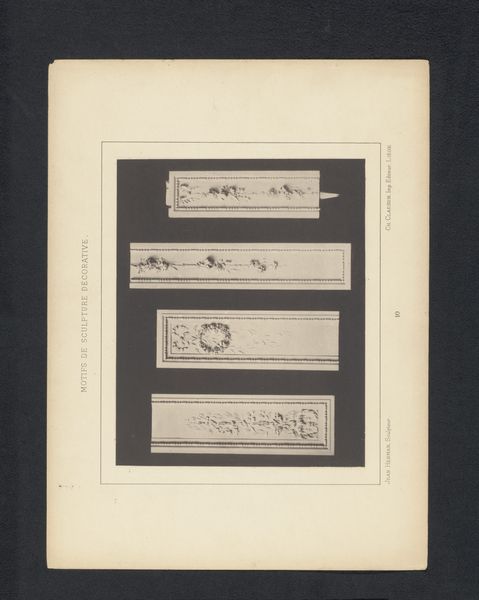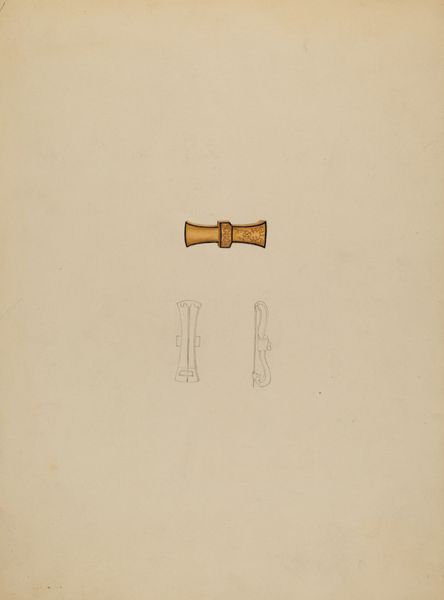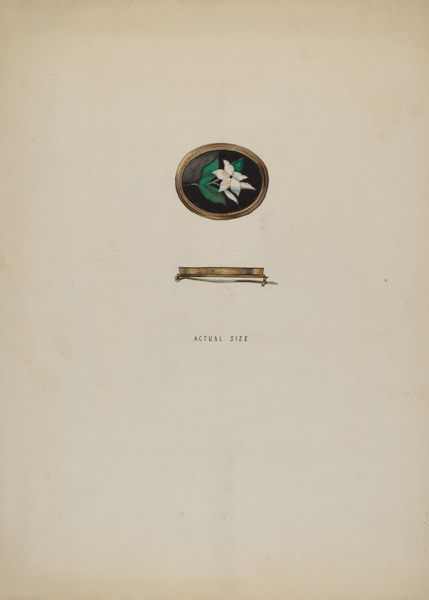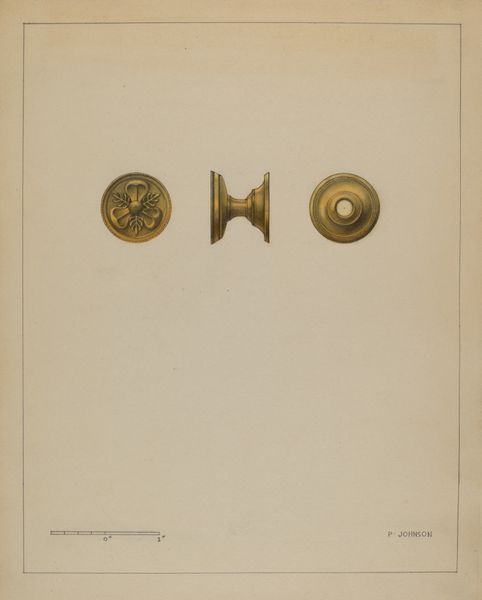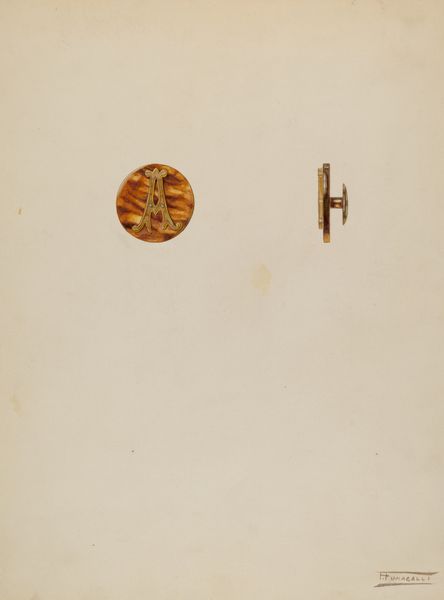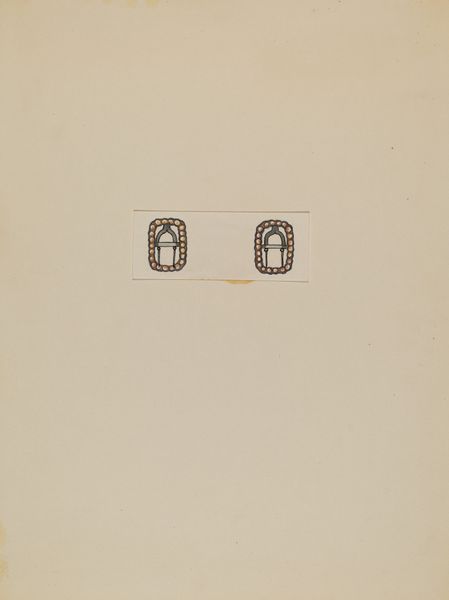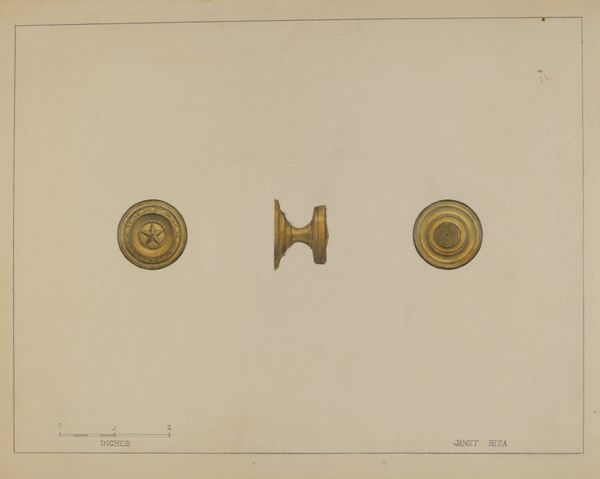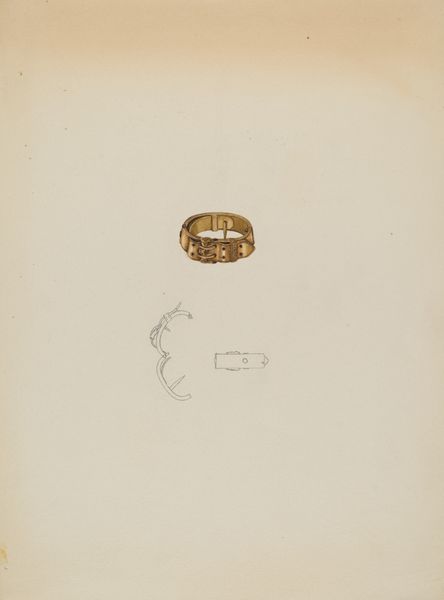
drawing, mixed-media, watercolor
#
portrait
#
drawing
#
mixed-media
#
watercolor
#
geometric
#
watercolour illustration
Dimensions: overall: 35.8 x 24.5 cm (14 1/8 x 9 5/8 in.)
Copyright: National Gallery of Art: CC0 1.0
Curator: Welcome. Today, we will examine a mixed-media drawing entitled "Earring," created circa 1936 by Roberta Elvis. Editor: My first impression is of something quite subdued. The colors are muted, and the geometry gives it an archaic, almost ceremonial feel. Curator: Indeed. The drawing offers both a front and side elevation of the earring, executed with delicate lines and washes of watercolor, and it appears Elvis was attentive to shape and form. Semiotically, we see repeated squares and circles forming what seems like an elegant maze contained by the roundness of the outer ring. Editor: And the process by which it was made. One can see the pencil underdrawing beneath the watercolour washes; evidence of the hand present in both planning and execution. The 'twice actual size' notation tells us that the intended object is quite small. Imagine the labor involved in crafting such an item on a small scale with metalworking tools! Curator: Consider the period. The piece dates to the mid-1930s, a time heavily influenced by both Art Deco and emerging modernist forms. I observe in its abstraction an interest in simplifying design down to elemental components. Note the subtle interplay between the orthogonal forms and circular periphery, providing dynamism within containment. Editor: That is a compelling interpretation! My focus immediately shifted to questions of adornment. In a period marked by the Depression era’s financial hardships, the pursuit of such decorative objects presents questions about economic privilege, aspirations for social mobility, and the roles they served in self-expression. How many hours of skilled work for something mostly aesthetic? Curator: The value assigned to such adornment can, of course, be analyzed through the lens of commodity fetishism and the perceived symbolism it imparts to the wearer. In Elvis's drawing, these considerations are distilled, emphasizing formal structure, composition and material essence, rendering the object’s visual presence quite powerful despite the small scale. Editor: Seeing the artist’s plan, and visualizing its realization in precious metal brings different contexts to mind. I like how the drawing shows design process, rather than art object, to focus on labor and commodity, questioning traditional separations of fine art from design and craft. Curator: Analyzing its elemental qualities gives, to my view, its aesthetic appeal strength, as it communicates the core forms of modern art principles into something meant for personal, everyday use. Editor: Considering all facets of its production opens dialogue regarding economic value and challenges notions of 'high art.’
Comments
No comments
Be the first to comment and join the conversation on the ultimate creative platform.
